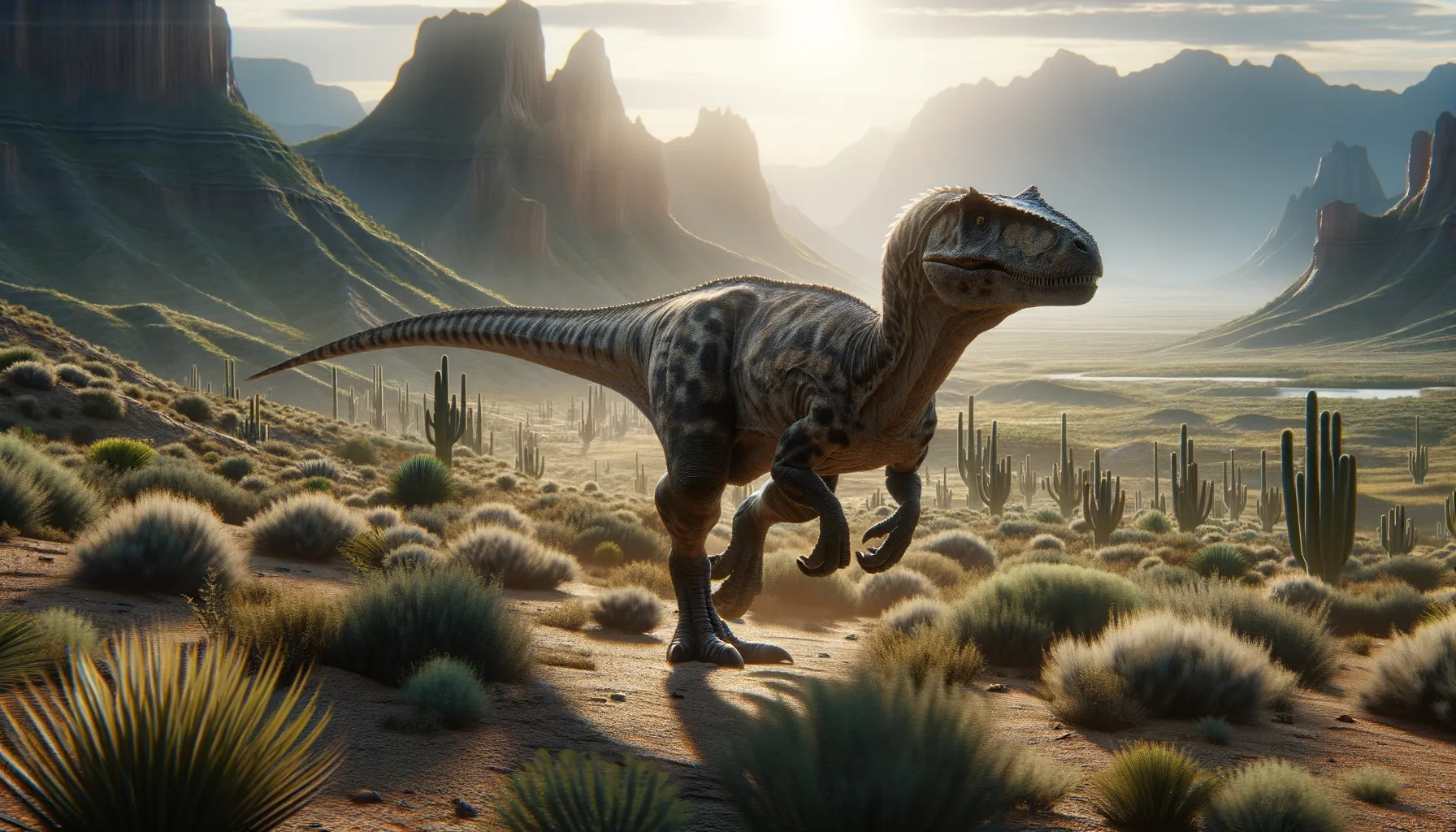
Cinizasaurus
A swift-footed predator of Jurassic lands!
Period
Jurassic
Length
Around 6 meters long.
Height
Approximately 1.8 meters tall.
Weight
Roughly 500 kilograms.
Cinizasaurus was a medium-sized theropod dinosaur that roamed the Earth millions of years ago. This predator is noted for its ability to sprint short distances, making it effective at ambushing prey. Its remains were first discovered in what is now the southwestern United States, providing important clues about the distribution of theropod species. With its distinctive physical features and adaptive capabilities, Cinizasaurus presents a fascinating subject for paleontological studies.
Diet
Cinizasaurus primarily fed on smaller herbivorous dinosaurs, using its sharp teeth to tear into flesh. It may also have scavenged on carrion when the opportunity arose, supplementing its diet with a variety of available meat sources.
Hunting
As a quick and agile hunter, Cinizasaurus likely relied on surprise and speed to catch its prey. It would have used its strong hind legs for fast dashes, essential for closing in on faster-moving animals in its environment.
Environmental challenges
During the Jurassic period, changing climates and fluctuating sea levels posed significant challenges, affecting the availability of resources. Competition with other predators might have driven Cinizasaurus to adapt or migrate to areas with more abundant prey. Natural disasters such as volcanic eruptions or storms could have drastically altered its habitat, forcing rapid adaptations or migrations for survival.
Speed
Moderate, suitable for short bursts.
Lifespan
Around 20 to 30 years.
First discovery
Uncovered in the early 2000s in North America.
Fun Facts
- Cinizasaurus was a small dinosaur that lived during the Late Cretaceous period.
- It was a herbivore, meaning its diet mainly consisted of plants.
- Cinizasaurus fossils have mostly been found in New Mexico, USA.
- This dinosaur was likely bipedal, walking on two legs.
- Cinizasaurus belonged to a group of dinosaurs known as theropods.
- Despite being small, it played an important role in its ecosystem as a plant-eater.
- Its name 'Cinizasaurus' is derived from the Spanish word for 'ashes', referring to the ash-covered rocks where its fossils were unearthed.
Growth and Development
Cinizasaurus offspring grew rapidly to reach a size where they could fend off potential predators. Juveniles likely faced a high mortality rate, necessitating quick physical development. As they matured, learning effective hunting techniques would have been crucial for survival in their competitive ecosystem.
Habitat
Cinizasaurus inhabited dry floodplains and forested areas, where prey was abundant. These regions offered structured environments for hunting and protection from larger predators. Seasonal changes in vegetation may have influenced its migration patterns to maintain access to food sources.
Interaction with other species
Cinizasaurus would have interacted with contemporary herbivorous dinosaurs as prey, establishing its role as a predator. Interaction with other predatory dinosaurs was likely competitive, with skirmishes over territory and food common. Symbiotic relationships with smaller creatures acting as scavengers were also possible, following its hunts for leftover scraps.
Natural lifespan
Cinizasaurus had a natural lifespan of roughly 25 years.
Reproduction
Cinizasaurus laid eggs in secluded nest sites, with adults possibly guarding the nests from predators. Hatchlings were vulnerable, requiring quick development and protection to ensure survival. Females may have exhibited some level of parental care, aiding young in the initial stages of life.
Social behaviour
Cinizasaurus might have lived in loosely organized groups, benefiting from group hunts or protection. Social hierarchies possibly existed, dictated by strength and hunting success. Lone individuals were not uncommon, as solitary hunting strategies were sometimes necessary.
Fossil locations
Fossils of Cinizasaurus have predominantly been found in the southwestern United States. The discovery sites offer rich insights into the diversity of theropod species during the Jurassic period. This region's sediments have preserved numerous skeletal fragments, aiding detailed studies of its morphology.
